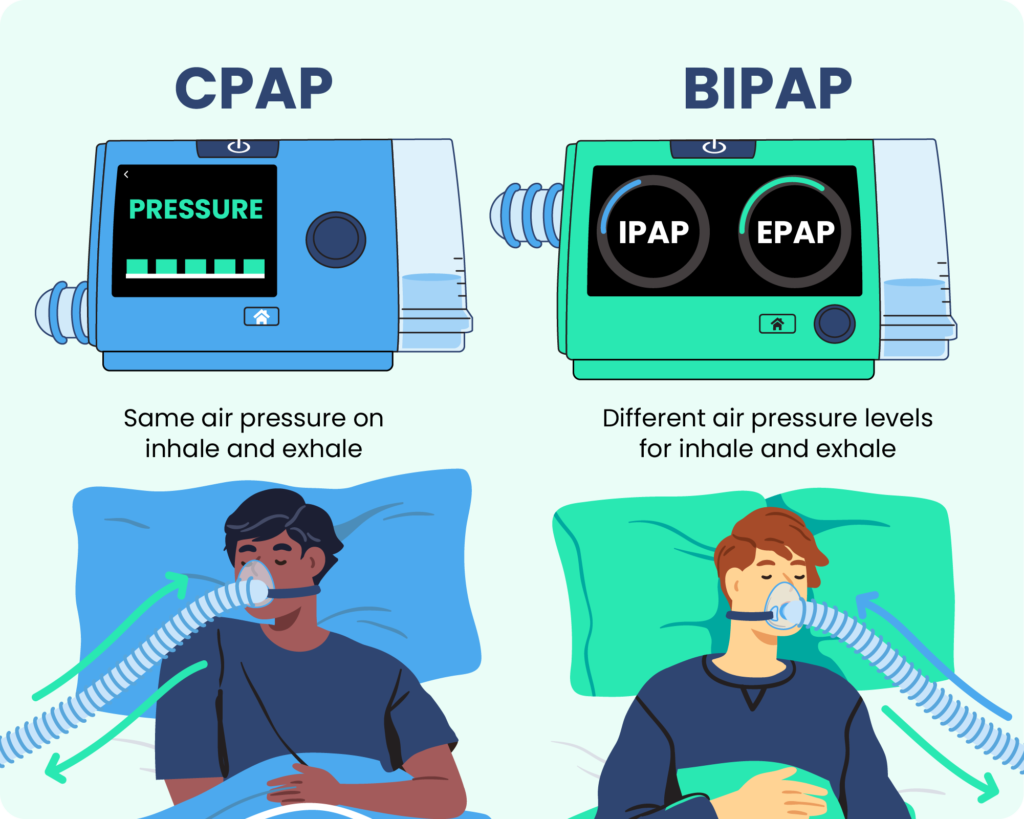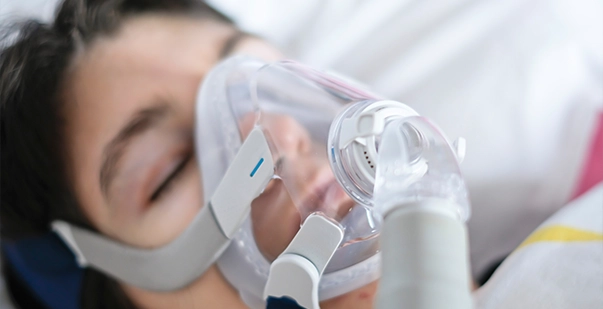Customized Strategies Available for BiPAP Rental Solutions
Customized Strategies Available for BiPAP Rental Solutions
Blog Article
Bipap vs. CPAP: Which Is the very best for Your Rest Problem?
When browsing the intricacies of rest problems, the selection in between BiPAP and CPAP treatment is a crucial factor to consider. Each modality supplies distinct benefits tailored to particular conditions, yet the decision pivots on specific patient demands and convenience levels. While CPAP supplies a steady air movement appropriate for obstructive rest apnea, BiPAP's twin pressure setups may enhance convenience for those with even more detailed respiratory problems. Comprehending these differences can substantially affect treatment efficacy, leaving one to contemplate which alternative genuinely aligns with their health demands and lifestyle.
Comprehending Rest Disorders
Rest disorders incorporate a variety of problems that interrupt normal rest patterns, influencing both the high quality and period of remainder. These conditions can show up in various types, consisting of sleep problems, sleep apnea, narcolepsy, troubled leg disorder, and parasomnias. Each problem presents unique obstacles, commonly causing considerable daytime fatigue, cognitive problems, and emotional disturbances.
Sleeplessness is characterized by difficulty dropping or staying asleep, while sleep apnea includes duplicated disruptions in breathing during rest, commonly causing fragmented rest. Narcolepsy, on the other hand, is noted by excessive daytime sleepiness and sudden rest assaults. Troubled leg disorder triggers uneasy experiences in the legs, triggering an irrepressible urge to relocate them, which can additionally impede the capability to sleep.
The impact of rest conditions expands past specific wellness, affecting total performance, connections, and top quality of life. Recognizing the certain nature of each condition is crucial for efficient medical diagnosis and treatment. As sleep wellness comes to be significantly identified as an important component of general health, resolving these problems is necessary for boosting both rest high quality and daily functioning.
Just How CPAP Functions
Continual Favorable Airway Stress (CPAP) treatment is often utilized as a primary therapy for obstructive sleep apnea (OSA) The device of CPAP entails using an equipment that delivers a stable stream of air with a mask worn throughout sleep. This air flow preserves positive pressure in the airway, preventing the collapse or blockage of the throat that can happen throughout sleep.
When a patient inhales, the CPAP device provides a continual circulation of air, making sure that the airway continues to be open - BiPAP Rental. This not only reduces the signs and symptoms of OSA, such as snoring and interfered with sleep patterns, but likewise minimizes the connected health risks, consisting of cardiovascular problems and daytime fatigue
The pressure settings on a CPAP device can be personalized to satisfy private person needs, usually figured out through a rest research study. On the whole, CPAP therapy has actually been revealed to substantially improve the quality of rest and total health for people experiencing from obstructive sleep apnea.
Exactly How BiPAP Works
BiPAP, or Bilevel Positive Air Passage Pressure, is a specialized kind of non-invasive ventilation that is specifically advantageous for patients with conditions such as intricate rest apnea or respiratory conditions. Unlike CPAP, which provides a continuous stream of air at a single pressure, BiPAP supplies 2 distinctive stress settings: a higher inspiratory stress for inhalation and a reduced expiratory pressure for exhalation. This dual-pressure approach enables much easier breathing, lowering the initiative called for during exhalation.
The tool runs via a mask fitted over the nose or mouth, connected to an equipment that produces air stress. When the patient breathes in, the device delivers the higher stress to assist with air flow, making sure that the respiratory tract stays open. Upon exhalation, the device immediately lowers the stress, making it extra comfy for the patient to breathe out.

Secret Differences Between BiPAP and CPAP

On the other hand, BiPAP (Bilevel Positive Air passage Stress) supplies two various pressure settings: one for breathing and a reduced one for exhalation. This double pressure system allows for more comfy breathing, specifically for patients who struggle with breathing out against a constant stress. BiPAP is often suggested for clients with intricate rest apnea, chronic obstructive pulmonary illness (COPD), or those that need extra assistance during rest.
Furthermore, the complexity of BiPAP devices generally results in a higher cost and requires extra careful titration than CPAP. BiPAP Rental. Recognizing these key distinctions can aid in identifying which tool may be preferable for details sleep disorders, setting the groundwork for educated treatment decisions
Selecting the Right Therapy
The decision between BiPAP and CPAP therapy largely pivots on the specific qualities of the rest problem, the person's general health and wellness, and their comfort with the device. CPAP, which supplies a continual stream of air, is typically recommended for obstructive rest apnea (OSA)
Conversely, BiPAP gives 2 degrees of pressure: one for breathing and a lower one for exhalation. This dual stress system is helpful for clients with complicated rest apnea or those who experience difficulty breathing out versus a continual stress. Furthermore, BiPAP is typically advised for advice people with respiratory system conditions, such as chronic obstructive pulmonary illness (COPD), where varying pressure setups can enhance comfort and conformity.
Inevitably, a detailed examination by a sleep expert, including a rest study, can aid figure out which therapy aligns finest with the individual's needs. Aspects such as comfort, convenience of usage, and particular clinical conditions ought to additionally be taken into account to enhance therapy end results.
Verdict
In summary, both BiPAP and CPAP offer distinct objectives in the administration of sleep conditions. CPAP is effective for obstructive sleep apnea with constant air movement, while BiPAP uses double stress settings that improve convenience for those with complex sleep apnea or respiratory system concerns. The choice between these therapies must be guided by individual demands and problems, requiring a thorough evaluation by a sleep professional to guarantee ideal therapy results and enhanced top quality of sleep.

In general, CPAP therapy has been revealed to considerably improve the high quality of rest and total wellness for people suffering from obstructive sleep apnea.
BiPAP is usually recommended for patients with complex rest apnea, chronic obstructive lung condition (COPD), or those who require additional assistance during sleep.
CPAP is efficient for obstructive rest apnea with consistent airflow, while BiPAP offers dual stress settings that boost comfort for those with complex rest apnea or respiratory issues.
Report this page